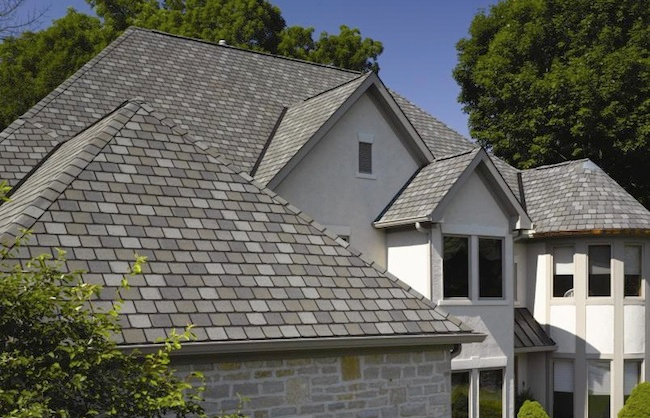[vc_row row_type=”row” use_row_as_full_screen_section=”no” type=”full_width” text_align=”left” padding_top=”10″ box_shadow_on_row=”no”][vc_column][vc_column_text]From natural materials like slate and wood to manmade products such as asphalt, sheet metal, and plastic polymers; there are more types and styles of roofing to choose from today than ever before. While each has its advantages and shortcomings, they all can add a distinctive design element to your home. So which one is right for you?
What to Look for in a Roof
There are many factors to consider when selecting a roof including:
- How long will it last?
- Does it hold up during natural disasters such as wildfires or hurricanes?
- Is it too heavy for the existing roof framing?
- Does the roof have enough slope?
- Will the look complement the style of the house?
- Are the materials eco-friendly and recyclable?
- Is the type of roofing allowed by local building codes?
- And finally, how much does it cost?
Pros and Cons
Some types of roofing may be better suited for your house than others. Factors such as the slope of the roof and strength of the framing could limit your choices. In areas prone to wildfires or hurricanes, look for a product with a high fire rating or good wind resistance. In addition, steps can be taken during the installation of many types of roofing to improve their resistance to fire or wind. Below is a rundown on the different types of roofing available.[/vc_column_text][vc_separator type=”transparent” up=”30″ up_style=”px” down=”0″ down_style=”px”][vc_separator type=”transparent” up=”35″ up_style=”px” down=”0″ down_style=”px”][vc_column_text]Regardless of their reinforcing type and appearance, asphalt shingles’ physical characteristics vary significantly. When installing asphalt shingles, NRCA recommends use of shingles that comply with American Society for Testing and Materials (ASTM) standards-ASTM D 225 for organic shingles and ASTM D 3462 for fiberglass shingles. These standards govern the composition and physical properties of asphalt shingles; not all asphalt shingles on the market comply with these standards. If a shingle product complies with one of these standards, it is typically noted in the manufacturer’s product literature and on the package wrapper.
Wood shingles and shakes are made from cedar, redwood, southern pine and other woods; their natural look is popular in California, the Northwest and parts of the Midwest. Wood shingles are machinesawn; shakes are handmade and rougher looking. A point to consider: Some local building codes limit the use of wood shingles and shakes because of concerns about fire resistance. Many wood shingles and shakes only have Class C fire ratings or no ratings at all. However, Class A fire ratings are available for certain wood shingle products that incorporate a factory-applied, fire-resistant treatment.
Tile—clay or concrete—is a durable roofing material. Mission and Spanish-style round-topped tiles are used widely in the Southwest and Florida, and flat styles also are available to create French and English looks. Tile is available in a variety of colors and finishes. Tile is heavy. If you are replacing another type of roof system with tile, you will need to verify that the structure can support the load.
Slate is quarried in the United States in Vermont, New York, Pennsylvania and Virginia. It is available in different colors and grades, depending on its origin. Considered virtually indestructible, it is, however, more expensive than other roofing materials. In addition, its application requires special skill and experience. Many old homes, especially in the Northeast, still are protected by this long-lasting roofing material.
Metal, primarily thought of as a low-slope roofing material, has been found to be a roofing alternative for home and building owners with steep-slope roofs. There are two types of metal roofing products: panels and shingles. Numerous metal panel shapes and configurations exist. Metal shingles typically are intended to simulate traditional roof coverings, such as wood shakes, shingles and tile. Apart from metal roofing’s longevity, metal shingles are relatively lightweight, have a greater resistance to adverse weather and can be aesthetically pleasing. Some have Class A fire ratings.
Synthetic roofing products simulate various traditional roof coverings, such as slate and wood shingles and shakes. However, they do not necessarily have the same properties.
Before making a buying decision, NRCA recommends that you look at full-size samples of a proposed product, as well as manufacturers’ brochures. It also is a good idea to visit a building that is roofed with a particular product.[/vc_column_text][vc_separator type=”transparent” up=”35″ up_style=”px” down=”0″ down_style=”px”][vc_column_text]

